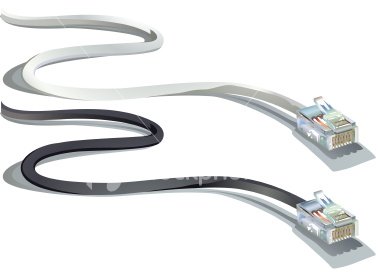
Category 5e Cabling Becoming Obsolete
 It is inevitable that applications requiring speeds greater than 100 Mbps and 1000 Mbps will increase. The growing use of wireless devices, high resolution images, HD video streaming, surveillance, and multimedia are straining the capacity of Category 5e infrastructure, and there will come a point when it will be unable to cope.
It is inevitable that applications requiring speeds greater than 100 Mbps and 1000 Mbps will increase. The growing use of wireless devices, high resolution images, HD video streaming, surveillance, and multimedia are straining the capacity of Category 5e infrastructure, and there will come a point when it will be unable to cope.
Although it is capable of handling 1000 Mbps speeds at 100 MHz, the upgrading of Category 5e cabling will be necessary in the near future in order to support new applications and emerging technologies that will be deployed by businesses that are bandwidth intensive.
Category 5e Inadequate in Near Future
Cabling will be migrating from being behind walls to above ceilings, where it can end at a wireless access point (WAP). Much more cabling will be needed to serve an increasing utilization of WAPs for numerous users.
The advent and growth of new Wave 2 WiFi devices, which transmit at data at ranges of 1 Gbps up to perhaps 7 Gbps, will require faster Ethernet links for the connection of these WAPs. Installing Category 6A cabling may be the only effective solution for companies. The need for average speeds greater than 1G is increasing, perhaps to 10G. Category 5e is incapable of carrying speeds of 10 Gbps speeds over a required distance of 100 meters.
An emerging technology using balanced twisted-pair cabling, HDBaseT is used to transmit uncompressed HD video, audio, Ethernet, control, and power over 100 meters. Category 5e will be unable to support it, while Category 6A cabling is capable.
4-cable pair PoE, the next power over Ethernet standard, provides power more efficiently. However, the gauge of cable must grow in order for the reduction of resistance and permit higher power delivery. Consequently, 4-pair PoE has superior performance on Category 6A 23 AWG than Category 5e 24 AWG.
Cabling Standards Recommend Category 6A
For certain organizations, such as educational institutions, commercial buildings, data centers, and healthcare facilities, new installations require or recommend at least Category 6 cabling. Even though Category 6A may require greater capital expenditure than Category 5e cabling, costs will be decreased in the long term. A company’s network will be future proofed and will be capable of supporting new applications and emerging technologies.
Union Network Cabling
When union work requires a unionized cabling group, call on Union Network Cabling for your commercial Cat5e/6/6a and fiber cabling projects. Specializing in cabling for data, voice, security and even the latest WiFi and LiFi solutions. Phone: (202) 462-4290


 One of the most important things about
One of the most important things about 

 Category 5e and Cat6 Cable
Category 5e and Cat6 Cable